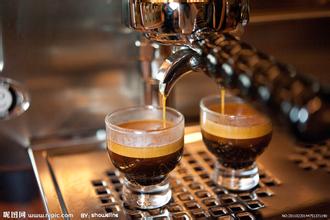Introduction to the flavor and taste characteristics of Panamanian Coffee Manor Baru volcano
The story starts from the last century and from the digging of the Panama Canal. This maritime traffic route, on a par with the Suez Canal, and the geographical dividing line between North and South America, should also be the first landmark that comes to mind when the world talks about Panama.
The construction of the Panama Canal lasted 30 years from 1883 to 1914. The project was initially led by the French, and then the development rights fell to the Americans, during which as many as 50,000 craftsmen and technicians were employed, many of whom were engineers from northern Europe. Toleff Bache M ö nniche is one of them.
The Norwegian engineer, who graduated from Dresden College in Germany, was in charge of gate technology at the port of Cologne on the Panama Canal. Tropical rain forest climate in Panama, hot and humid and mosquito ravages make it difficult for many Nordic people to adapt, continue to suffer from disease, many people died as a result. In 1911, Toleff Bache, who had suffered from malaria for the fourth time, took a steamboat along the Pacific coast to Bopquete, a small town in Chiriqui province, where the dry climate and fresh air allowed him to recover. Deeply in love with the land, he returned here in 1924 with his wife Julia and bought a piece of land at the foot of the Baru volcano, what is now Lilida Manor. They built their own house here, a Nordic-style building, and have lived here ever since, and started the operation of the coffee estate thanks to Boquete's unique climate, wet and dry seasons, plenty of sunshine and precipitation, as well as fertile soil formed by volcanic ash from the Baru volcano. Lerida's coffee cultivation quickly became its own climate, and in 1929, the coffee beans of the estate were exported to Germany for the first time. Won a good reputation for Panamanian coffee. In the following 3/4 centuries, as a family manor, Lelida coffee cultivation continued to develop, constantly achieving its international reputation. The coffee here grows in the mountains at an altitude of 1500 meters. The coffee garden is surrounded by a well-protected natural tropical ecological park. Nearby Baru Volcano National Park and La Amistad National Park are natural animal and plant reserves, all of which form the manor's unique microclimate. Also created its unique flavor this bean is fully washed and processed, the appearance is fresh emerald green, beans full of luster, at a glance is a high density of hard beans. Baked to an obvious degree of high fruit aroma shows, the entrance is also juice-like sweet and sour, bright and refreshing. Baking a little deeper to the baking degree of high, the sweetness of vanilla and nectar in dried incense are mixed together, which makes people intoxicated. The baking degree of high+, acidity decreases, mellowness increases, sweetness increases obviously, fruit acid is softer and more lively, and strong sweetness and fragrant fruit aroma can still be felt in the aftertaste.

Important Notice :
前街咖啡 FrontStreet Coffee has moved to new addredd:
FrontStreet Coffee Address: 315,Donghua East Road,GuangZhou
Tel:020 38364473
- Prev

An introduction to the flavor and taste of the elegant Panamanian Coffee Manor
It's the Panamanian region we know best. The special mountainous terrain of this area forms a microclimate which is very suitable for growing coffee. Cool weather and frequent fog slow down the ripening process of coffee cherries, and some even say that the climate can already simulate high-altitude planting. Altitude: 400m-1900m harvest time: December-March planting varieties: Tibika, Kaddura, Kadu
- Next

Introduction to the Flavor and Taste characteristics of Columbia Coffee Manor Lazimus Manor
Colombia, located in the northwest of South America, is a beautiful country with a long history. Indians have lived on this land since ancient times. It was colonized by Spain in 1531 and gained independence in 1819. It was renamed in 1886 to commemorate Columbus, the discoverer of the American continent. Colombia has beautiful mountains and rivers, beautiful scenery, pleasant climate and four seasons.
Related
- Does Rose Summer choose Blue, Green or Red? Detailed explanation of Rose Summer Coffee plots and Classification in Panamanian Jade Manor
- What is the difference between the origin, producing area, processing plant, cooperative and manor of coffee beans?
- How fine does the espresso powder fit? how to grind the espresso?
- Sca coffee roasting degree color card coffee roasting degree 8 roasting color values what do you mean?
- The practice of lattes: how to make lattes at home
- Introduction to Indonesian Fine Coffee beans-- Java Coffee producing area of Indonesian Arabica Coffee
- How much will the flavor of light and medium roasted rose summer be expressed? What baking level is rose summer suitable for?
- Introduction to the characteristics of washing, sun-drying or wet-planing coffee commonly used in Mantenin, Indonesia
- Price characteristics of Arabica Coffee Bean Starbucks introduction to Manning Coffee Bean Taste producing area Variety Manor
- What is the authentic Yega flavor? What are the flavor characteristics of the really excellent Yejasuffi coffee beans?

